Green Wood vs Dry Wood – Everything You Need To Know
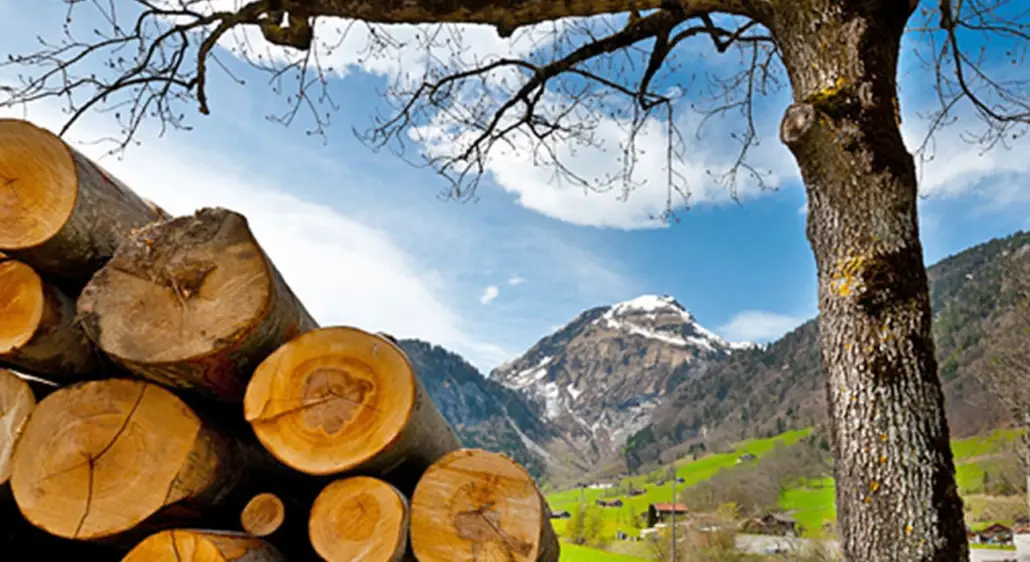
Recognizing at what point wood has fully fried out can be a hugely useful skill.
I’m about to tell you everything you need to know about green wood and dry wood so that you too can distinguish if the wood you have is ready for the fire, or any other designation you have for it.
Here we’ll discuss the definitions of green wood dry wood respectively, as well as the differences and characteristics of each.
What Exactly Is Green Wood?
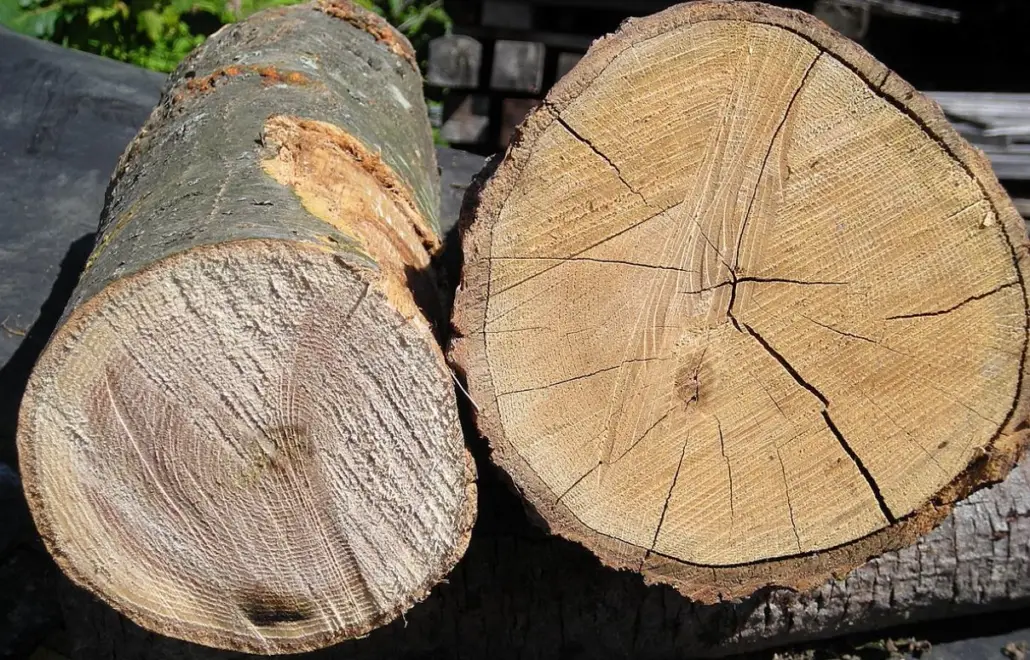
Green wood is wood that has been cut down recently enough to still be ‘fresh’.
This wood has not yet been seasoned (meaning it hasn’t had time to dry out yet).
Despite not being seasoned yet, green wood can still have some common uses. Let’s look at these next.
What Are The Common Uses Of Green Wood?

Building & Construction
You may be wondering why anyone would use green wood for building a cabin or a cottage.
There are actually many reasons:
- Green wood is easier to cut because it’s softer
- Nails and screws hold to green wood a lot better
- There’s no waiting period; the wood can be used immediately
For these reasons green wood is used for cabin building and other forms of construction quite often—especially by those who harvest their own wood.
Appliance Fuel
Another common use for green wood is for fuel in appliances such as burners and smokers.
Because there’s still a significant amount of moisture in green wood, the wood burns at a lower temperature.
Green wood also takes longer to be fully consumed by the fire.
The Pros And Cons Of Green Wood Over Dry Wood
There are some challenges when working with green wood, but for certain purposes it’s the perfect wood to use.
Let’s look at some pros & cons.
Pros
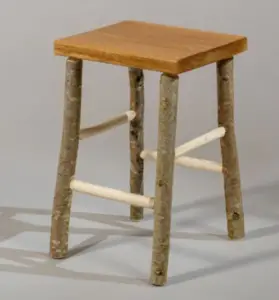
Green Wood Takes Longer to Burn Up
Green fuels are used to burn slower when necessary.
This is useful when smoking food or cooking something at a slower pace.
It Burns at a Lower Temperature
It takes up a lot of the fire’s energy to burn green wood due to the water the wood still holds.
This results in a low temperature fire when high heats are unnecessary.
It Fastens More Efficiently
Green wood tends to hold screws and nails better.
That’s because green wood is denser than dry wood, and will therefore hold fastenings better.
There’s No Waiting Period Before Using it
Once you’ve harvested green wood you can use it instantly.
If you know how to work with green wood, there’s no need to wait for it to be seasoned before starting your building project.
It’s Easier to Cut and Doesn’t Split Easily
Working green wood is easier than most think.
It cuts easily, resists the tendency to split, and can be processed exactly the same as dry timber.
Cons
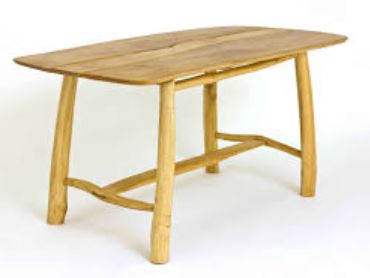
Green Wood May Grow Mold
If green wood is left with insufficient airflow, it can grow mold and begin to rot.
Crevices in the wood may also develop mold if the wood isn’t used quickly enough or washed thoroughly with cold water. Keeping your green wood cool is the best way to prevent this.
The Color May Change Over Time
Depending on the wood species, your green wood is likely to change color when it does eventually dry.
If it’s in a fixed position, this may not be what you were expecting.
It’s Not Ideal as Firewood
While green wood fuels are great for certain uses, green wood can stagnate your fire if you’re looking for a traditional bonfire or campfire.
What Exactly Is Dry Wood?
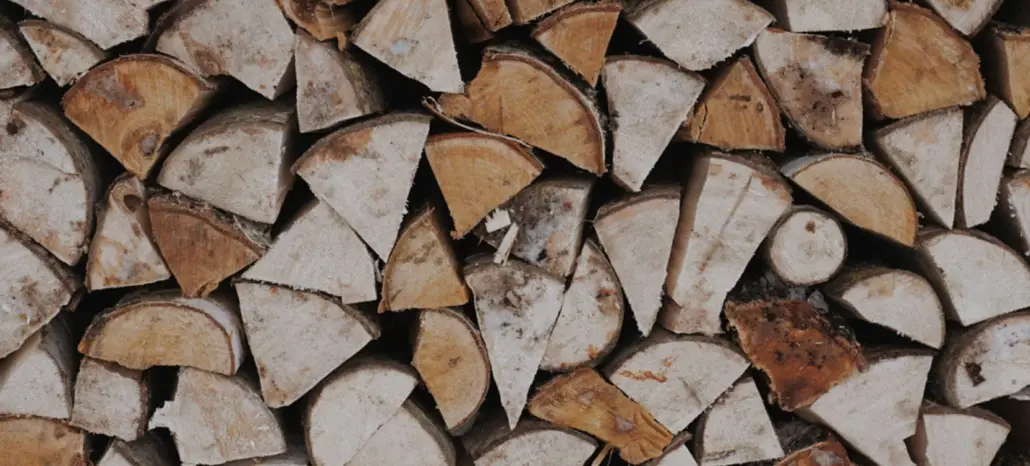
Dry wood is wood that’s been fully seasoned.
This means that all the moisture has dissipated from the wood and it is left as dry. This is the preferred version of wood among those who use it, so let’s see what uses it has.
What Are Some Common Uses Of Dry Wood?
Whether it’s dry timber or dry lumber, there are tons of uses for dry wood.
Interestingly, these uses are similar or identical to green wood, but within different contexts. The most common uses for dry wood are:
- Cabin Building
- Furniture Production
- Bonfires & Campfires
- Fences & Poles
- Home and Garden Decoration
But how does dry wood compare to green wood in these contexts? Let’s have a look.
The Pros And Cons Of Dry Wood Compared To Green wood
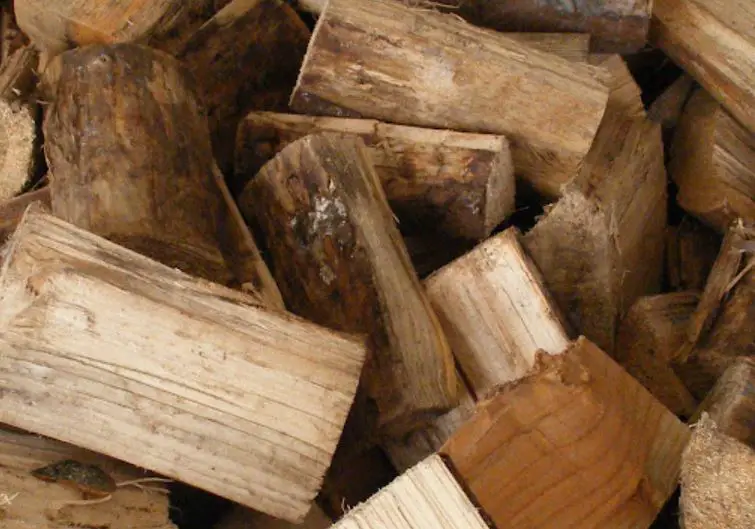
Pros
Dry Wood has Reached its Full Maturity in Terms of Color and Density
No surprises is one benefit to working with dry wood. What you see is what you get.
The structure and make up of the wood won’t change much over time.
It is Mold Resistant
For the most part, dry wood won’t form mold if left in a heap in your storage room.
This being said, it is wise to keep some wood species away from moisture if they aren’t naturally weather resistant.
It Burns Hot as Firewood
Dry wood is more efficient as a fuel or as a heat generating firewood. The lack of moisture ensures a hot fire—if that’s what you’re after.
Cons
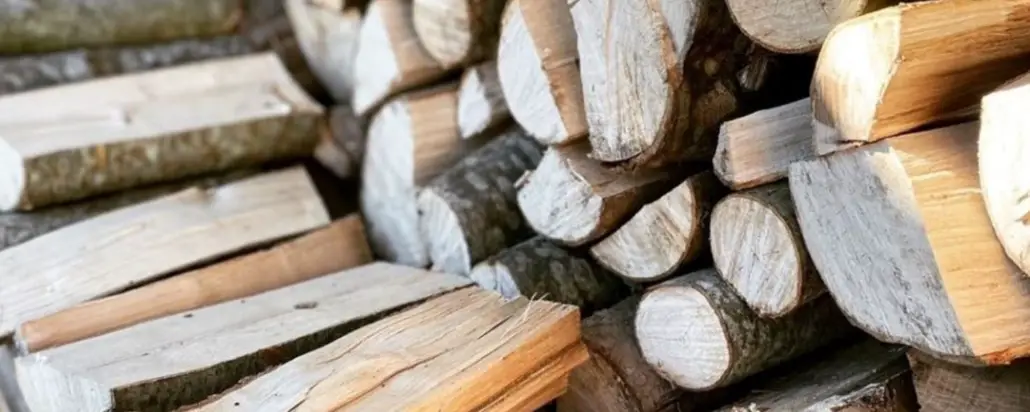
Dry Wood Splits Easily
One of the most common issues you may have with dry wood is that it splits. Less dense woods are especially prone to splitting during the cutting, nailing, screwing or shaping processes.
It’s Less Dense and May Struggle to Hold Screws & Nails
When wood is void of moisture, it naturally becomes less dense. This may cause your wood to detach after you’ve screwed or nailed it to another surface.
Dry Wood is a Haven for Termites and Other Bugs
Wood eating bugs love dry wood. There are a number of bugs that may decide to make a home in your dry wood, not the least of which is the dreaded termite!
Certain Dry Woods are More Difficult to Carve & Whittle
If you’re starting to whittle or decided to take up wood carving, it’s best to start with green wood. Green wood is more malleable and can be shaped easier than dry wood due to its inherent moisture properties.
How To Turn Green Wood Into Dry Wood
There are a number of factors that determine how fast your green wood will dry. These include:
- The wood species
- The size of each wood piece
- The humidity level of the environment
- Sun exposure
- How fresh the wood is before drying
How Do You Dry Green Wood Faster?
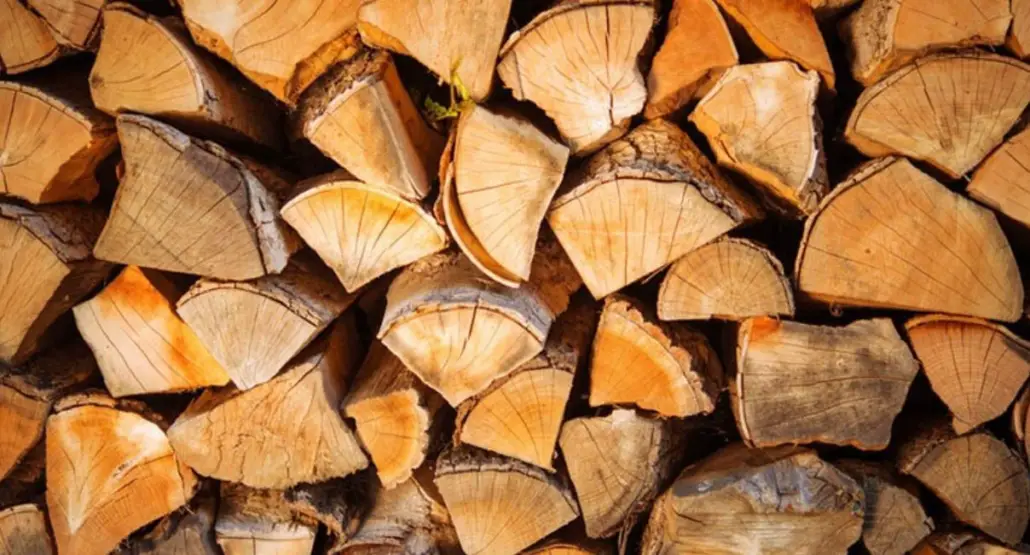
For wood of an average thickness to dry, you will need to allow approximately one year for proper drying (or seasoning).
This means you will have to plan the drying process way ahead of time. But what if you want to speed this process up?
In order to speed up the drying process of green wood at home, consider the following step by step method:
- First, cut your wood into pieces of more or less the same size. The wood will dry quicker the smaller the pieces are, but more importantly the pieces will dry at the same pace.
- Then, place your wood pieces in an open outdoor area where they can be spread out. A spot that gets a lot of sun is best, but dry wind should also be a factor. If you’re piling your wood pieces, be sure that there aren’t pieces in the center of the pile that aren’t going to get wind and/or sun exposure.
- Pile your wood in a way that allows air to flow through each piece.
- If necessary, cover your wood at the top of the pile. This is only a precaution against rain if you’re in a rainy area.
Milling Green Vs Dry Wood – What are the Differences?
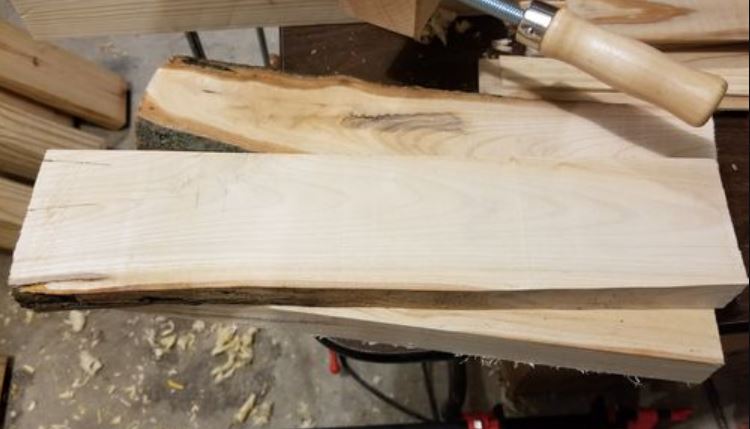
Milling dry wood can often cause warping. The level of warping can depend on the type of wood you’re milling, but this is a common problem.
The best way to prevent dry wood warping is to cut it while it is still in its green wood form. Once you have the shapes and sizes you want, the wood will season quicker and be ready to use as is.
Kiln Dried Vs Green Lumber Framing
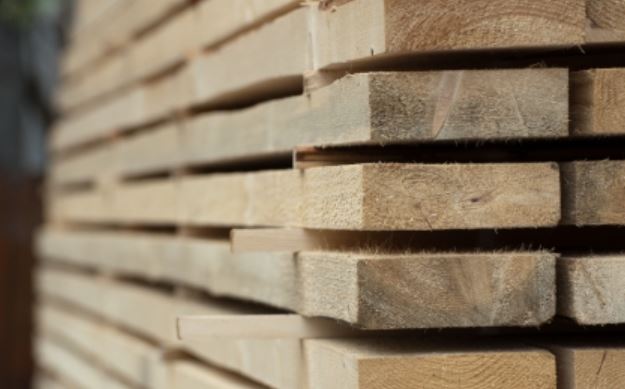
For house framing, many construction experts use the kiln drying method to dry their lumber quicker.
While this adds a significant level of convenience to wood drying, it isn’t the most ecofriendly option, since a large amount of electricity is used in the kiln drying process.
It’s perfectly fine to construct your building frame from green lumber. This is a less expensive option and environmentally friendly. But doing so should take a few considerations into account.
- The lumber will shrink slightly as it dries. This can cause framing problems if not considered at the earliest construction stage.
- Good air circulation should be encouraged in the eventual completed building to prevent mold.
- If not fastened correctly, the lumber may split at the fastening points when almost or fully dried.
Is It Better To Turn Green Wood Or Dried Wood?
Wood turning is a great way to sculpt wood pieces.
Those who are veterans at this craft are skilled enough to turn dry wood. But if you’re still a novice at wood turning, your best material is green wood.
Green wood turns and sculpts easier because it has less of a tendency to fight against your blade. There’s almost a clay-like quality to green wood due to its moisture content, making green wood the best option for turning.
Green Wood Vs Dry Wood For Sawing
Green wood is also easier to cut than dry wood. Not only does dry wood tend to split, but it’s also much more unforgiving on your saw blade.
If you wish to preserve your saw and get through the cutting process quicker and with less effort, then cut your wood while it is still green.
Carving Green Wood Vs Dry Wood
Carving leans toward the same rule of thumb as wood turning. Both require a blade for sculpting, and green wood carves better than dry wood because there’s almost no chance of splitting, chipping or damaging your whittling blade.
Is it Easier To Split Dry Wood Or Green Wood?

If possible, split your wood pieces soon after the felling process.
Green wood is by nature more malleable than dry wood, and therefore splits easier with less waste while it is still in its green wood stage.
Which Burns Hotter: Dry Wood or Green Wood?
If it’s a hot fire you’re after, then dry wood is always the way to go.
Burners are filled with green wood only when a controlled, lower temperature fire is needed.
Also bear in mind though that dry wood will burn faster, since there is less moisture for the fire to contend with.
How Do Green Wood and Dry Wood Compare in Price?
Green wood, green timber and green lumber are all cheaper to purchase due to their immediate availability.
If any of these forms of wood have to first go through the drying process, the price will increase depending on the drying process used post felling.
Which is More Popular?
Dry wood seems to have always been the more popular wood for construction, but recently the popularity of green timber and lumber have increased significantly.
With the increase of wood construction, green timber and green lumber are becoming more popular because of their ecofriendly nature and their lower costs.
Green Wood Vs Wet Wood
There is a subtle difference between wet wood and green wood. Green wood is wood that has been recently felled.
This wood is still fresh and needs time to season. Wet wood is wood that has already had significant time to season, but has still retained much or some of its moisture.
How Long Does Green Wood Take To Dry?
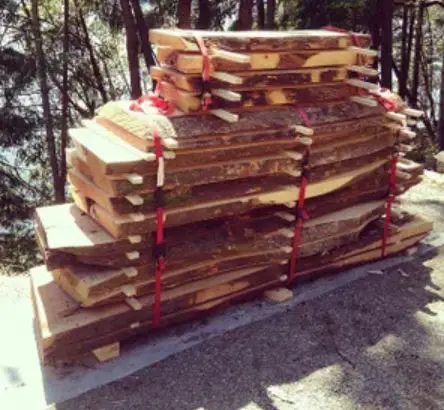
Properly seasoned wood takes around one whole year to achieve.
But there are some types of wood that dry faster. How long wood takes to dry heavily depends on the region you are in as well as the species of wood you are drying.
Can You Make Furniture Out of Green Wood? Some Pros & Cons
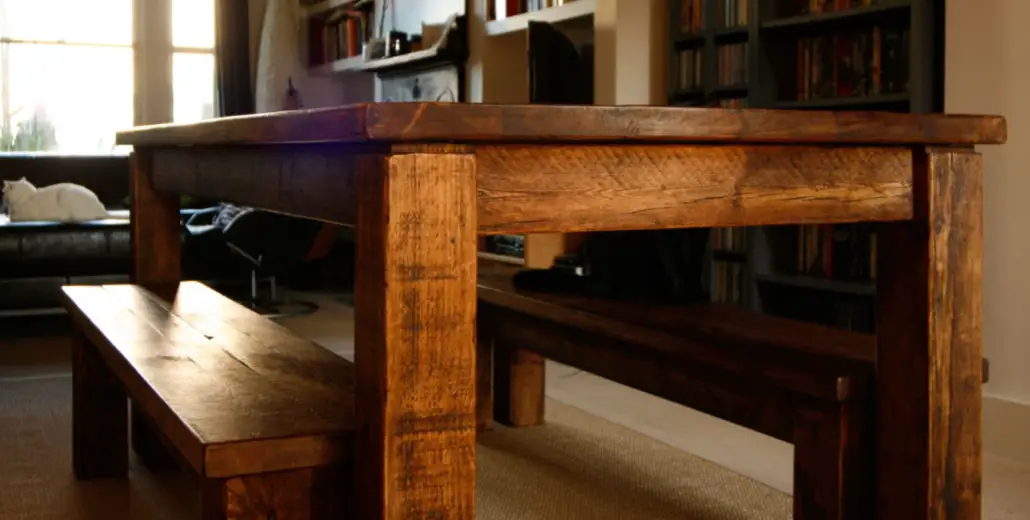
A major trend in furniture making today is the use of green wood.
This isn’t limited to weaving, but actually involves wood in its green form being used to shape, construct and even carve new furniture.
Here are some pros and cons that go with furniture making using green wood.
Pros
Green Wood Is Cheaper
Green wood has not yet been dried, so it’s more accessible (and therefore cheaper) than dry wood.
This is an appealing factor to those who enjoy building their own furniture.
Green Wood Is A More Flexible Material To Work With
For the most part, green wood is easier to work with for the following reasons:
- It’s easier to cut
- It’s easier to turn and carve
- If thin enough, green wood is bendable
- It doesn’t easily split
Making bespoke furniture is easier if you have more flexibility with the wood you’re constructing with.
Green Wood Fastens Better
Green wood’s density helps it hold screws and nails a lot better than dry wood.
That being said though, dry wood is a better option for joinery. If your joining parts are separate from the rest of your wood, opt for dry wood in these cases.
Cons
Wood Changes As It Dries
Green wood will change over time as it dries naturally.
This may cause some structural changes in your furniture due to shrinking and/or color changes.
Final Thoughts
With the popularity for green wood growing day by day, we can still see many uses for both dry wood and green wood.
It’s all about how you want to work with your wood, what you want to create and how knowledgeable you are about different wood species.
I hope you have a better idea of how each one benefits various objectives, and what to look out for when building with dry wood as well as green wood.


